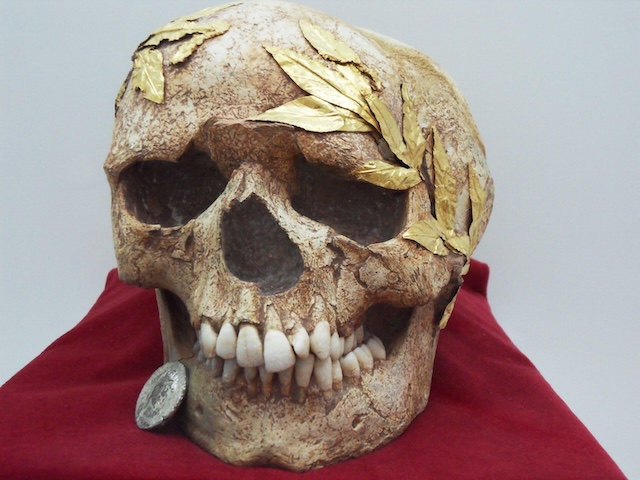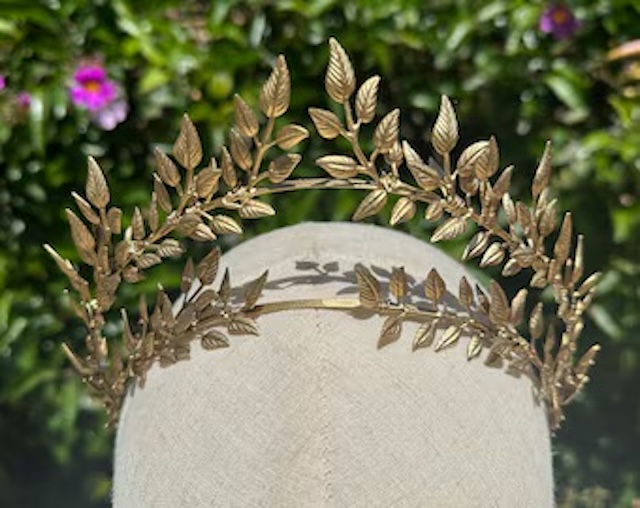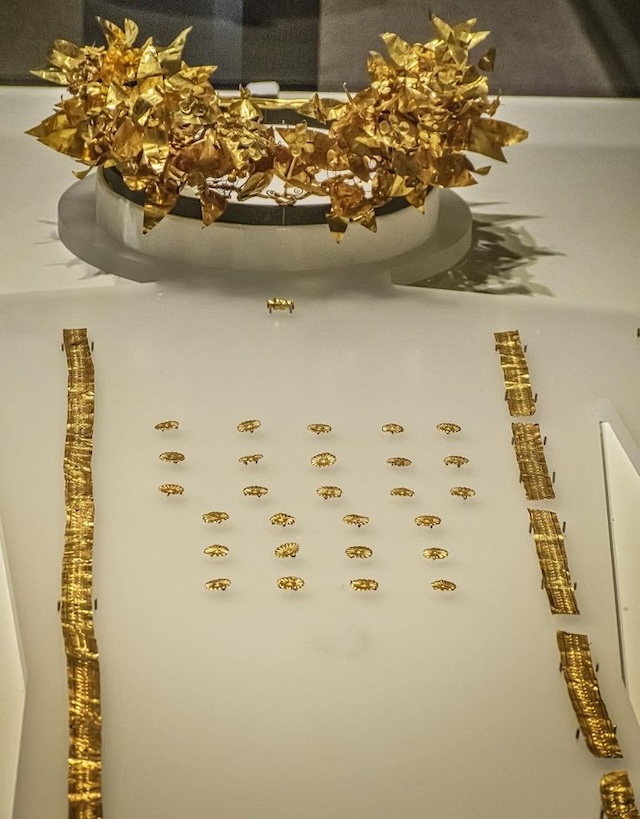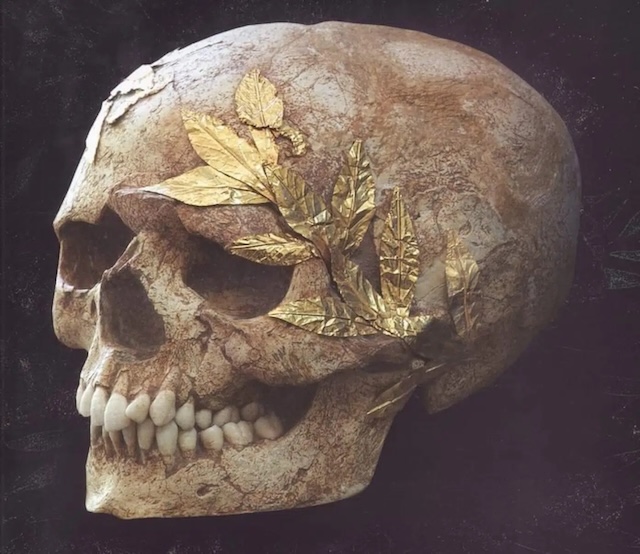Archaeological discoveries often provide a unique window into the past, helping us understand the cultures and traditions of ancient civilizations. In the ancient city of Lato, Crete, a remarkable discovery was made — a skull adorned with a delicate gold wreath, still attached after 2,500 years. This incredible find not only reveals the wealth and artistry of ancient Greek society but also holds deep symbolic and historical significance. Let’s explore the story behind this golden relic and what it tells us about the people of Crete over two millennia ago.
The Discovery of the Skull in Lato
The skull with its gold wreath was uncovered in the cemetery of the ancient city of Lato, a Dorian city-state on the island of Crete. The wreath, in the form of laurel branches, is an extraordinary testament to the craftsmanship of the time. Over the centuries, while the organic tissues of the body decayed, the wreath endured, clinging to the skull. Additionally, a silver coin was found inside the mouth, a symbolic offering to Charon, the mythological ferryman of Hades. The coin was meant to pay for the soul’s passage to the underworld — a tradition deeply rooted in ancient Greek beliefs about death and the afterlife.
This skull and its accompanying adornments are now considered one of the most impressive archaeological finds in Greece, showcasing not only the respect for the dead but also the cultural significance of the symbols of wealth and honor in ancient Greek society.

The Ancient City of Lato: A Glimpse into Crete’s History
Lato, where the skull was discovered, was an ancient Dorian city located in eastern Crete, near the village of Kritsa. The city was built in a defensible position, overlooking the Mirabello Bay. Lato’s history likely predates the arrival of the Dorians in Crete, but the ruins we see today primarily date from the Dorian period (5th and 4th centuries BCE). This strategic location, high in the hills and between two peaks, made Lato an important city-state in its time. It also became a center for religious and social activities, evidenced by its architecture and the city’s organization.
Although the city was destroyed around 200 BCE, its port, known as Lato pros Kamara, continued to be used during the Roman period. The ruins of Lato provide a fascinating look at the evolution of ancient Greek cities and their enduring influence throughout history.

Symbolism of the Gold Wreath and Silver Coin
The gold wreath found on the skull is an iconic symbol in ancient Greece. Wreaths made from laurel, olive, or myrtle branches were often awarded to athletes, military leaders, and those of high status as a mark of honor and victory. In this particular case, the individual was likely an athlete, given the connection between laurel wreaths and athletic achievements in Greek culture.
The silver coin in the mouth, meanwhile, follows the ancient Greek burial practice related to the journey to the afterlife. According to Greek mythology, when someone died, their soul needed to cross the River Styx to enter the realm of the dead. The ferryman Charon would only transport souls that paid him with a coin, traditionally placed in the mouth of the deceased. The presence of the coin in this burial suggests a deep respect for these beliefs and traditions, ensuring that the deceased could pass safely into the afterlife.

Lato’s Historical and Mythological Significance
The city of Lato is believed to have been named after the goddess Leto, a figure of great importance in Greek mythology. Leto, the mother of Apollo and Artemis, was worshipped widely across the Greek world. Some scholars also suggest that the name “Lato” may have been derived from ancient Linear B tablets, referring to a location or deity known as “RA-TO.”
During its peak, Lato minted its own coins, featuring images of the goddess Eileithyia, further emphasizing the city’s religious importance. The ruins of Lato also highlight the city’s significance in Crete’s history, reflecting its powerful position during the Dorian period and its lasting influence throughout subsequent eras.

The Archaeological Museum of Agios Nikolaos
The skull and gold wreath were once part of the impressive collection at the Archaeological Museum of Agios Nikolaos, one of the most important museums in Crete. The museum housed archaeological treasures ranging from the pre-Minoan period (3000 BCE) to the Roman period (2nd century CE). These artifacts, collected from across eastern Crete, provided valuable insights into the region’s long and rich history.
Among the museum’s exhibits were findings from the large Minoan cemetery at Agia Fotia, the famous terracotta figurine of the Goddess of Myrtos, and the golden pin, along with other remarkable relics. The museum’s collection was an invaluable resource for researchers and history enthusiasts alike. Unfortunately, the museum has been temporarily closed, and its artifacts moved to other institutions across Crete.
Conclusion: Preserving the Legacy of Crete’s Rich Past
The gold wreath still adorning a 2,500-year-old skull in Crete is a fascinating reminder of the grandeur and sophistication of ancient Greek civilization. This single artifact encapsulates the values, beliefs, and artistic achievements of the time, offering us a glimpse into a world long past.
Discoveries like these highlight the importance of preserving archaeological finds, ensuring that future generations can continue to learn from and appreciate the legacy of ancient cultures. Crete, with its vast and diverse history, continues to be a treasure trove for archaeologists, historians, and tourists alike. And as we continue to uncover the secrets of its past, the story of Lato, its people, and their enduring traditions will remain a vital chapter in the history of human civilization.
